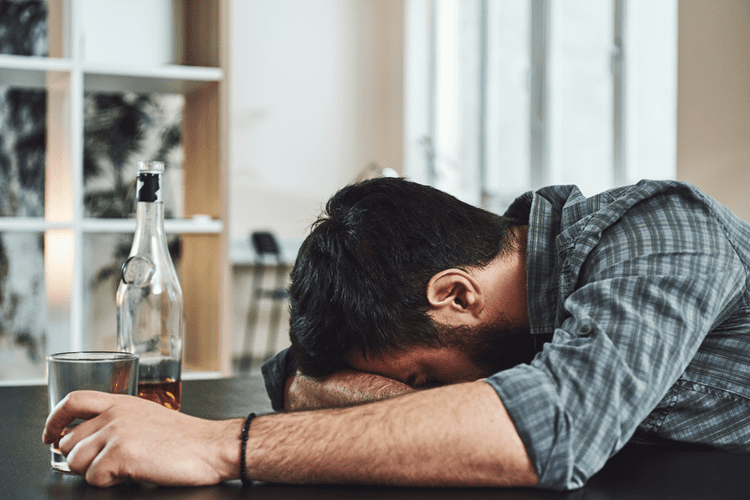However, the relief provided by these substances is temporary and often leads to a harmful cycle. Therapy and counseling are essential components in addressing both loneliness and addiction. Therapists can help individuals explore the root causes of their feelings of loneliness and develop coping strategies to manage them. Additionally, therapy can provide individuals with the tools they need to address their addiction and work towards recovery. Cognitive-behavioral therapy, in particular, has been shown to be effective in treating both loneliness and addiction by helping individuals change negative thought patterns and develop healthier behaviors. Non drug abusers, who have real familial support system, do not need any compensation for their conflict by abusing drugs or taking high risk behaviors.

Ways to Battle Loneliness in Addiction Recovery
That simple act can make a world of difference and may be the start of a new connection that could save someone, possibly even save their life. “The ORAU team has spent the past year doing formative research, including literature reviews, surveys, convening an expert advisory group and doing focus groups with pregnant and postpartum women facing substance use challenges. We are dedicated to admitting addiction and loneliness and serving all residents and patients equally, regardless of race, color, or national origin. Our facilities ensure everyone receives fair access to compassionate, comprehensive, and top-quality care.
The Link Between Loneliness and Addiction
Conversely, excessive Internet use can intensify feelings of loneliness, creating a vicious cycle 19. Scholars have confirmed the existence of a clear Alcohol Use Disorder and strong bidirectional relationship between Internet addiction and loneliness 20. However, this bidirectional relationship is complexity; using the Internet to replace offline social interaction can increase loneliness, while using it to enhance or expand social connections may reduce loneliness 21. Another perspective posits that Internet addiction contributes to feelings of loneliness. Research has demonstrated a positive correlation between Internet addiction and loneliness, indicating that individuals with higher levels of Internet addiction tend to experience a stronger sense of loneliness 16.

Exploring the Link Between Loneliness and Addiction
Firstly, the pathway coefficient of social anxiety affecting IA through loneliness was 0.036 (0.012, 0.060). The total value of the indirect effect is 0.110 (0.081, 0.140), and the confidence interval does not contain 0, so the mediating indirect effect holds. So, loneliness and coping styles played a significant mediating effect in the model.
Pearson’s correlation analysis
Moreover, even if there is no technical barrier to converting the effect measures in observational studies to a common metric, it may be a bad idea. Nevertheless, as a sensitivity analysis, we used the mechanism in Supplementary Fig. 6 and related formula for incorporating multiple kinds of data and converting the effect measures to a common metric. Often, as the person tries to hide substance use from loved ones or minimize the way it has affected their life, they can fall deeper into substance use.
- Isolation and solitude overall have multiple dimensions, both negative and positive, that are avoided and pursued to varying extents by people who use drugs.
- Our residential treatment program helps clients overcome daily triggers and develop essential life skills.
- Therefore, the use of the random effects model was appropriate for evaluating the effect sizes.
- It’s an opportunity to reconnect with yourself, your thoughts, and your feelings.
- The Internet can provide adolescents with emotional value and security, so they tend to use online socializing to meet their sense of belonging 52.
- Studies have shown that adolescents with social anxiety may experience interpersonal difficulties and form negative perceptions of themselves and others, leading to an increase in depression or aggressive behavior 60.
This can result in increased secrecy and alienation from healthy, supportive relationships. In short, feeling the need to keep this part of their lives hidden almost always leads to further isolation and loneliness. Most people need a certain amount of human contact to feel good, and strong social support is necessary to maintain sobriety. It requires effort and patience to develop new relationships or rebuild damaged ones. Realize that feelings of isolation are a part of the process of addiction recovery, and remember that being alone is different from being lonely. Trauma and mental health issues can also contribute to both loneliness and addiction.
Chronic loneliness can lead people to seek comfort in substances or engage in addictive behaviors to escape emotional pain. This connection between addiction and loneliness is real; many individuals who feel isolated look for quick relief from their distress. For example, using drugs or alcohol may offer temporary relief and create a false sense of connection, but it only numbs deep feelings of emptiness. As Dr. Gabor Maté pointed out, “the opposite of addiction is not sobriety; it’s connection.” Building a supportive environment helps mitigate feelings of isolation, essential for recovery.
